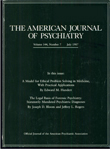The Pharmacology of Alcohol and Alcohol Dependence
This book comprises up-to-date reviews of the basic pharmacology of alcoholism, prepared by leading investigators. Well-referenced chapters cover such important topics as brain imaging research, electrophysiological activity, and autonomic nervous system findings associated with alcohol use and abuse. Studies on physical dependence, tolerance, and withdrawal are well covered, as well as the effects of alcohol on calcium and other ion channels, γ-aminobutyric acid, the excitatory amines, and neurotransmitters. Other eminently readable topics include cross-tolerance and stroke among alcohol abusers.
Most research cited involved animal models, especially mice and rats, as well as in vitro cell preparations. These research findings are generally based on indirect rather than on direct measures. Thus, the investigators have had to be both careful and creative.
As noted by Deitrich and co-authors on page 458, pharmacological agents have often been used for studies on the basis of clinical observations of humans, rather than the reverse. Consequently, application to humans has long predated most of the research efforts described. Despite decades of research, clinical applications (or even implications) are sparse.
Numerous statements throughout the book reveal the differing perspectives of basic and clinical students of alcoholism. A few examples from the opening pages follow:
In their preface, the editors begin, “The pharmacology of alcohol was the first area to be studied by alcohol researchers,” although clinical researchers began making cogent observations on alcoholism centuries ago (1).
On page 4, the authors appear to lend considerable credence to the concept of “primary psychological dependence,” although addiction psychiatrists abandoned the term a few decades ago. Also on page 4, the authors state (without citation) that 15% of untreated delirium tremens cases result in death. The rate could be much higher or, perhaps, lower depending on the definition of “untreated.”
These discordant statements, together with the clinical irrelevance of much research in this area, call for a greater collaboration between those funding, designing, and conducting such research and those facing “real world” clinical and public health problems.
In sum, this volume provides excellent summaries of the research on the pharmacology of alcohol and alcoholism conducted over the last few decades. Forensic psychiatrists dealing with cases involving alcohol would gain from reviewing the latest data on human cases and studies (especially the chapter by Kalant). Practicing psychiatrists, including those in addiction psychiatry, will find little to help them with their clinical tasks.
1 Rodin AE: Infants and gin mania in 18th century London. JAMA 1981; 245:1237–1239Crossref, Medline, Google Scholar



